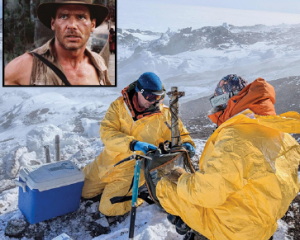The Accident Compensation Corporation has paid out $46 million for injuries to people who hit the South Island’s ski slopes in the past five years.
Figures released by the national no-fault accident insurance scheme show 55,577 snowsports claims have been made nationally since 2014.
The vast majority, 43,477, are from the South Island, including 9237 this year.
When skiers and snowboarders completed their final runs of the 2018 season and packed away their equipment in mid-October, the ACC had already paid $5.04 million to cover all treatments and entitlements.
That figure will rise significantly to an annual total by the end of the year. In 2014, the cost was $8.8 million for 8127 South Island claims, rising to $11.5 million for 8551 claims last year.The ACC covers 80% of the income of people off work as a result of an injury.
The Queenstown Lakes district — home to five skifields, off-piste runs, heli-skiing trips and back-country ski touring — accounted for 5213 of this year’s claims, which amounted to $2.7 million to date.
But NZSki chief executive Paul Anderson said claimants were only a fraction of the total number of skiers and boarders.
More than half a million people took to the slopes at the company’s Queenstown skifields, The Remarkables and Coronet Peak, this season.
"We track all injuries on the mountain — the rate getting treated in our medical rooms is about two per 1000 skiers and snowboarders," he said.
There were "massive" safety programmes on each mountain.
Measures included trail modification, padding various hazards and high-quality, well-maintained rental gear and other equipment.
"There’s a huge commitment for us to make sure our guest experience is as high quality and as risk-free as possible, but we can’t ignore the fact that skiing and snowboarding is a controlled fall and sometimes there are accidents," Mr Anderson said.
Typical injuries for skiers were of the knee and lower leg, while snowboarders generally tended to hurt their shoulders and arms.
The majority now wore helmets, so head injuries were declining, but there was no move yet to make them compulsory.
"As an industry it is something we discuss and debate every year ... but we do feel it is a personal choice and we’d rather effect change through education."
NZSki contracted private firm Medical Rescue for on-mountain treatments, but also relied on St John for ambulance transfers and the Lakes District Air Rescue Trust for helicopter transfers, Mr Anderson said.
"By making the investment to have a more professional arrangement for our medical services on the hill, helicopter evacuations have decreased by 50% over the last couple of years, which is great because we’re relying less on those very expensive services," Mr Anderson said.
The ACC claims in the North Island totalled about 12,000 over the five years, accounting for $17.6 million.
All figures are GST exclusive, and cover all treatment and entitlements incurred for that claim, except the cost of emergency treatment at public hospitals, which is bulk-funded under Public Health Acute Services (PHAS) and costs are not allocated to individual claims.
St John was approached for comment but did not respond before deadline.













